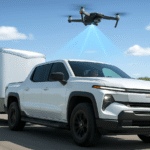In May 2025, domestic sales by South Korea’s main automakers experienced a slight decline of 3% compared to the previous year. Despite the introduction of new models by Hyundai and Kia, overall demand in the country remained subdued due to factors such as high household debt and weak consumer sentiment. Uncertainty over US trade policies and domestic political instability further dampened corporate confidence.
The country’s GDP contracted by 0.2% in the first quarter of 2025, prompting the central bank to lower its benchmark interest rate to stimulate domestic consumption. Hyundai led the market with a 2.4% increase in domestic sales, while Kia saw a slight decrease. Renault Korea reported a significant surge in sales, driven by the launch of the new Grand Koleos hybrid SUV.
On a global scale, the “big-five” automakers from South Korea saw a marginal increase in sales in the first five months of the year. Hyundai’s global sales dipped by 1.7% in May, with a focus on expanding its EV production capacity in the US. Kia’s global sales also experienced a slight decline, with a strategic plan to increase sales by 4% in 2025.
GM Korea faced challenges with a decline in both domestic and overseas sales, contemplating a potential relocation of operations to the US. KG Mobility reported a rebound in global sales, with plans to expand its zero-emissions vehicle range. Renault Korea witnessed a significant increase in global sales, driven by domestic sales and exports of hybrid vehicles.
Looking ahead, South Korean automakers are prioritizing the launch of new models, focusing on SUVs, BEVs, and hybrid vehicles to meet evolving market demands. Hyundai and Kia have set ambitious sales targets for 2025, while GM Korea and Renault Korea are strategizing to overcome challenges and strengthen their market positions.
In conclusion, the South Korean automotive industry is navigating through a challenging economic landscape, with a mix of opportunities and obstacles. With a focus on innovation, sustainability, and strategic partnerships, the country’s automakers are gearing up to adapt to changing market dynamics and maintain their competitive edge in the global automotive market.







